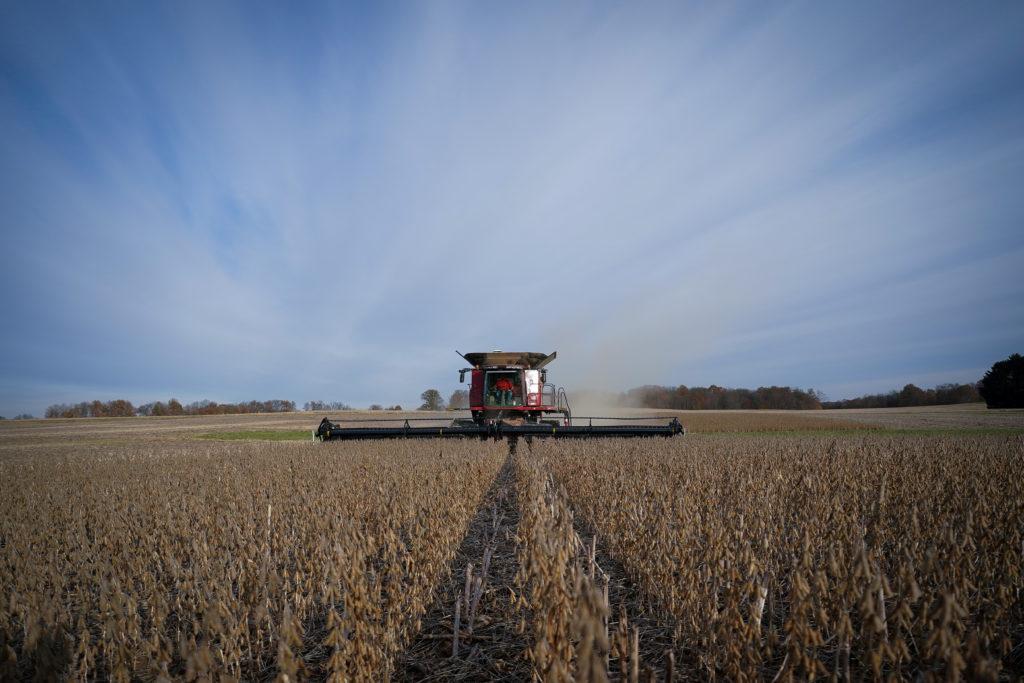American farmers find themselves trapped in an intensifying economic maelstrom as global trade tensions accelerate toward unprecedented levels in 2025. The latest trade conflict, primarily between the United States and China, presents extraordinary challenges for agricultural producers nationwide. Recent tariff impositions have triggered swift decline across various farming sectors, with economists increasingly voicing alarm about the situation’s trajectory.
The confrontation between these economic titans has placed agricultural trade at the central battlefield of international commerce disputes. As the second-largest supplier of agricultural commodities to China, American producers face disproportionate exposure to retaliatory measures. Rural communities throughout farming regions confront uncertain futures while export markets shrink rapidly beneath their feet.
Some agricultural economists describe the current environment as “peak uncertainty” due to tariffs. This characterization reflects the profound apprehension permeating through American farmlands. Their latest surveys reveal troubling data. A substantial 72% of agricultural economists now classify the row crop sector as experiencing recession—a notable jump from 62% just one month prior. Similarly concerning, 82% believe these conditions might force additional consolidation throughout agricultural industries.
Economic Realities on the Ground
Farmers face compressed margins with concerning amounts of operating debt. This debt, carried forward from previous seasons, weighs heavily on operational decisions for the current growing season. Many producers have absorbed negative returns over multiple consecutive years, a pattern extending across virtually all row crops. The financial strain has become increasingly unbearable.
The Trump administration’s trade strategies have provoked passionate responses from agricultural stakeholders. Some industry representatives have expressed stark warnings about the potential consequences. “By declaring a worldwide trade war, the administration is hurting American farmers, workers, and consumers,” noted industry representatives, highlighting increased input costs and limited market access among their foremost concerns. Perhaps most alarming remains the assertion that “This Trade War Will Force Farms to Close”—an existential threat to rural livelihoods.
The global reverberations of this conflict extend beyond immediate participants. Direct trade channeling between the United States and China shows signs of imminent collapse, though indirect exports of Chinese products to American markets appear less affected. This disparity creates unique arbitrage opportunities which some international entities may exploit, while creating additional competitive disadvantages for domestic producers.
Meanwhile, Brazil emerges as a significant beneficiary of these trade tensions. The South American agricultural powerhouse stands poised to capture market share previously held by American exporters. Their competitive edge strengthens with each escalation in tariff policies, potentially reshaping global agricultural trade patterns for decades.
The Stakes and Survival Strategies
The crucial aspect facing American agriculture centers on a singular question: can U.S. agriculture persist without access to Chinese markets? This existential query haunts policy discussions across Washington and rural America alike. The answer carries profound implications for rural economic vitality, food security, and international diplomatic relations.
Not all economists share pessimistic outlooks, however. A minority perspective suggests profit opportunities remain accessible, albeit with narrow margins. Some analysts contend it remains premature to evaluate tariff impacts on agricultural business decision-making, suggesting adaptive strategies might mitigate worst-case scenarios. This viewpoint, while representing a smaller faction, offers glimmers of optimism amid prevailing concern.
Agricultural stakeholders have been exploring alternative markets with varying levels of enthusiasm. Some producers have shifted production toward less affected commodities, while others explore value-added processing to enhance domestic market potential. These adaptive responses demonstrate resilience despite challenging circumstances.
The oilseed markets face particular vulnerability within this trade conflict. As major export commodities, soybeans and related products experience substantial price pressures and market access limitations. Producers in this sector have encountered particularly daunting strategic choices regarding planting decisions, inventory management, and long-term investment.
Agricultural sectors beyond row crops also encounter ripple effects from these trade disputes. Livestock producers face fluctuating feed prices alongside their own export challenges, creating complex operational environments requiring sophisticated management approaches.
Amid this turbulent landscape, rural communities search for sustainable paths forward. The economic pressure reshaping agricultural operations today will undoubtedly transform rural America’s character and composition. Whether these changes ultimately strengthen or diminish the agricultural sector remains the most consequential unknown in this unfolding economic drama.

